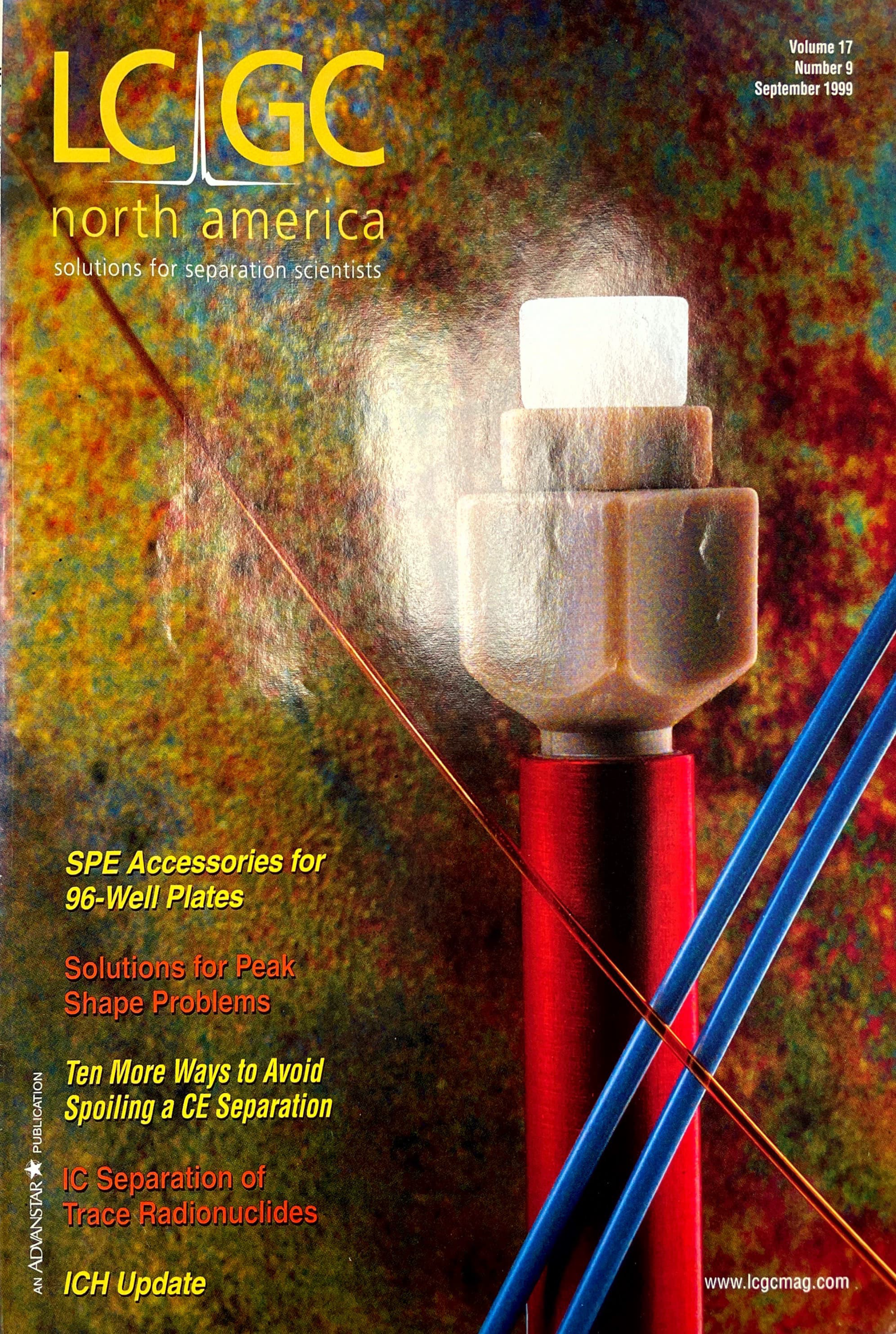Ion Chromatography Separation of Alkali, Alkaline Earth, Transition, Post-transition, Lanthanide, and Actinide Metal Cations in Waste Sludge
Trace radionuclides are present in concentrations of only a few hundred disintegrations-per-minute-per-milliliter in high-level radioactive waste samples. These radionuclides can be separated and analyzed using liquid scintillation counting and inductively coupled plasma–mass spectrometry. The authors developed an ion chromatography method to separate 31 cations in a single chromatographic run. Their method uses a linear gradient, a step gradient, and isocratic elution using four eluents in four separate eluent phases. The separation requires 45 min and has detection limits ranging from 0.1 to 5.0 ppm using spectrophotometric detection for nonradiative cations. This article presents the applications, limitations, interferences, precision, and accuracy of the method.
LCGC 17(9), 842–852 (1999).
Detecting Hyper-Fast Chromatographic Peaks Using Ion Mobility Spectrometry
May 6th 2025Ion mobility spectrometers can detect trace compounds quickly, though they can face various issues with detecting certain peaks. University of Hannover scientists created a new system for resolving hyper-fast gas chromatography (GC) peaks.
Sorbonne Researchers Develop Miniaturized GC Detector for VOC Analysis
April 16th 2025A team of scientists from the Paris university developed and optimized MAVERIC, a miniaturized and autonomous gas chromatography (GC) system coupled to a nano-gravimetric detector (NGD) based on a NEMS (nano-electromechanical-system) resonator.

.png&w=3840&q=75)

.png&w=3840&q=75)



.png&w=3840&q=75)



.png&w=3840&q=75)











